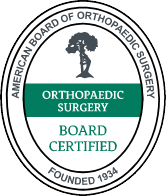Patient Success Stories
The condition: Jeanne Burns, an athletic and active woman in her early 40’s, began having pain in her hips which grew worse over a year’s time. She had to give up running marathons, and as the pain worsened, had to eliminate skiing in the winter, as well as other favorite athletic pursuits throughout the year.
Since Jeanne’s mother had undergone double hip replacement in recent years, she knew her condition was probably hereditary. She made an appointment with Dr. Robert Deveney, a specialist in total hip replacement surgery, who had successfully treated her mother. Dr. Deveney had used the Mako robotic-assisted surgical technique for Jeanne’s mother’s surgery and was able to eliminate her hip pain, so Jeanne was eager to inquire if this procedure would be recommended for her own condition.
The treatment: Upon examination and x-ray, Dr. Deveney determined that Jeanne had developmental dysplasia of the hips, a condition one is born with that impacts the architecture of the hips. Most people aren’t aware they have it until they begin developing pain in their 40’s. In addition to the pain, hip dysplasia is associated with a high risk of developing arthritis as one ages.
Dr. Deveney recommended a similar robotic-assisted procedure for Jeanne to address her hip pain, and scheduled her two hip replacement surgeries six weeks apart.
“Jeanne was a great candidate for the Mako robotic-assisted surgery technique. Robotic surgery allows the surgeon to design and plan joint replacement surgery in a way never done before.” Dr. Deveney explains. A pre-operative CT scan provides a 3-D image of the joint, enabling the surgeon to determine the exact size and position of the replacement optimal for the patient. During surgery, the technology provides immediate feedback so each component can be positioned with greater accuracy, using computer-aided precision.
According to Jeanne, the recovery went far better than expected. She liked being able to go home on the day of each surgery (no overnight stay). In addition, she knew she’d be required to walk the day of surgery, as her mother had done, and was determined to push herself during recovery as much as possible. “Being younger than the typical hip replacement patient helped my recovery greatly,” she commented.
Jeanne’s recovery for each hip involved physical therapy from home immediately after surgery and walking every day. After a week, she was able to go out of her home to on-site physical therapy. “I only used pain medication for a few days,” she adds.
After a few months, she began to return to her more active lifestyle, starting with Pilates and cycling. By winter, approximately eight months after surgery, she could enjoy downhill and uphill skiing (where you walk up the mountain and ski down). Though she hasn’t begun running yet, today, at one year post-surgery, she fully intends to add running back into her repertoire of activities. “I plan to be at 100 percent soon,” she adds.
“The Mako robotic-assisted surgery has changed the landscape for joint replacement,” Dr. Deveney explains, adding, “studies show recovery is more comfortable, and patients get a better result.” As an experienced orthopedic surgeon specializing in total hip and total knee replacement surgery, Dr. Deveney reports that patients reach optimal function sooner using these advanced techniques.
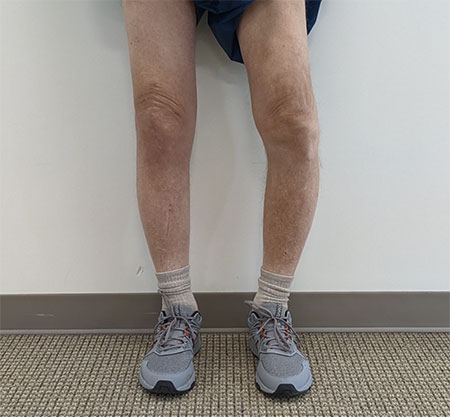 The condition: Ray Shail had been suffering with knee pain for over 20 years. The 68-year-old had a congenital deformity that caused him to be significantly bowlegged for much of his life, and as he aged, his knees became extremely painful and severely arthritic. He walked hunched over due to the pain, which also started affecting his hips and back as well.
The condition: Ray Shail had been suffering with knee pain for over 20 years. The 68-year-old had a congenital deformity that caused him to be significantly bowlegged for much of his life, and as he aged, his knees became extremely painful and severely arthritic. He walked hunched over due to the pain, which also started affecting his hips and back as well.
Still, Ray was anxious about having a knee replacement and fearful of hospitals. However, when an accident resulted in a broken kneecap, he was seen at the office of Dr. Robert Deveney, a specialist in hip and knee replacement surgery.
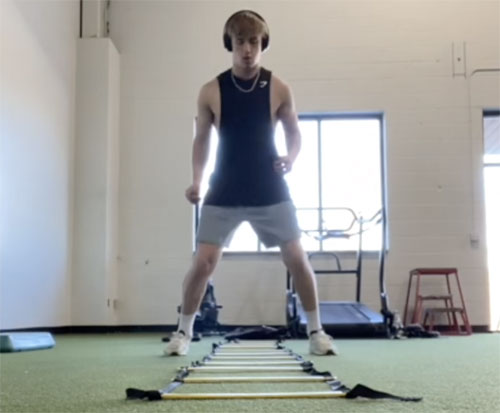 The condition: Drew Martin knew the moment he felt a pop in his knee during a Friday night football game that the injury was serious. Soon after, his knee swelled up and he experienced severe pain and could not put weight on his leg.
The condition: Drew Martin knew the moment he felt a pop in his knee during a Friday night football game that the injury was serious. Soon after, his knee swelled up and he experienced severe pain and could not put weight on his leg.
However, so many friends and family members recommended Dr. Ciminiello at OrthoConnecticut that the three-sport high school athlete felt he was going to the best possible doctor to help him recover. After his first appointment, he felt even better. “Dr. Ciminiello made me feel so comfortable, and I trusted I’d be getting the right course of treatment. He played college baseball so he understands athletes, which made me feel like he understood what I was going through,” Drew explains.
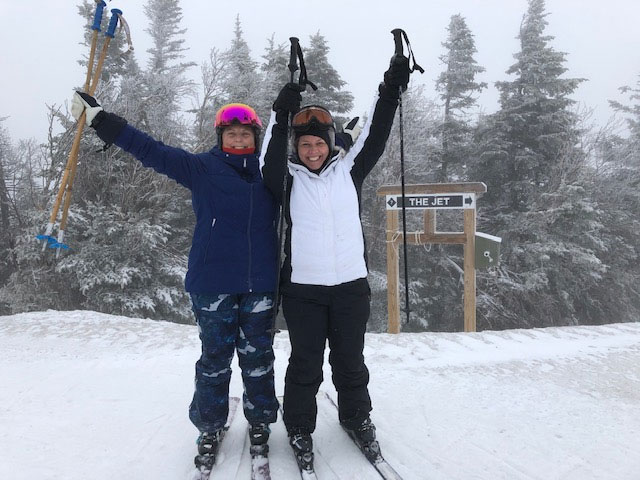 The condition: When Pacific Northwest native, Anne Uecker, went out skiing for the first time during the 2019–2020 ski season, she wanted to prove to her kids she was still a better skier than anyone else in the family. Unfortunately, she didn’t account for the slick conditions of the early East Coast ski season. When she hit a patch of ice and fell, she immediately knew something was wrong with her knee. “I skied down and went into the lodge to take a break,” explains Anne. “My knee was swelling, but I could still walk, and after a short break I skied two more runs.” Determined that everything would be fine, Anne went back to her condo and vacuumed while waiting for her family to finish for the day. “It can’t be that bad,” Anne told herself, “since I can walk and I’m not in a ton of pain. It just feels loose.”
The condition: When Pacific Northwest native, Anne Uecker, went out skiing for the first time during the 2019–2020 ski season, she wanted to prove to her kids she was still a better skier than anyone else in the family. Unfortunately, she didn’t account for the slick conditions of the early East Coast ski season. When she hit a patch of ice and fell, she immediately knew something was wrong with her knee. “I skied down and went into the lodge to take a break,” explains Anne. “My knee was swelling, but I could still walk, and after a short break I skied two more runs.” Determined that everything would be fine, Anne went back to her condo and vacuumed while waiting for her family to finish for the day. “It can’t be that bad,” Anne told herself, “since I can walk and I’m not in a ton of pain. It just feels loose.”
But four days later, her knee still felt loose so Anne went to see Dr. Ganal, who had successfully treated her daughter, Julie, for a broken wrist a few months prior. “Dr. Ganal had a great bedside manner and was easy to talk to, so I knew I wanted to see him for my injury,” says Anne. “Initially, Dr. Ganal suspected I had bruised or torn my ACL and sent me for an MRI,” Anne explains. “When the MRI came back it showed I had not only torn my ACL, but it was completely unattached.”
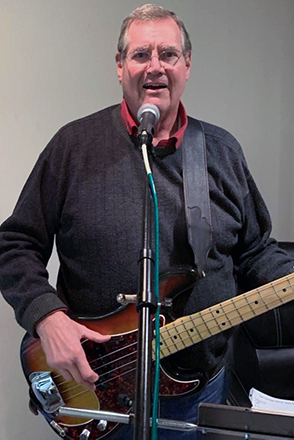 The condition: When Joe Sassano noticed that the fingers in his left hand had started to lack mobility and became slightly claw-like, he knew right away it was time to consult an orthopedic hand surgeon. Joe, age 70, is a passionate bass player who has been playing since age 11 and enjoys playing in a local band called “Decades,” around the Fairfield County. He knew that the condition would ultimately affect his ability to play if not treated right away.
The condition: When Joe Sassano noticed that the fingers in his left hand had started to lack mobility and became slightly claw-like, he knew right away it was time to consult an orthopedic hand surgeon. Joe, age 70, is a passionate bass player who has been playing since age 11 and enjoys playing in a local band called “Decades,” around the Fairfield County. He knew that the condition would ultimately affect his ability to play if not treated right away.
The condition, called Dupuytrens Contracture, but often referred to as Vikings disease, is a genetic disease commonly found in people with Northern European lineage. It causes scarring growths on the fascia of the palm, causing the fingers to slowly cave in and form a claw-like position. However, the condition is painless, so many people do not realize it is happening until the restriction in their hand is quite noticeable.
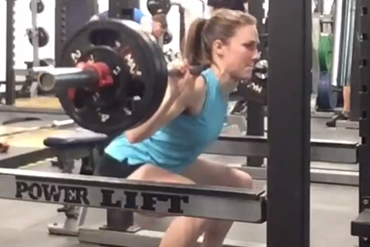 The condition: Colleen, a Physical Therapy graduate student working toward her doctorate at University of Connecticut, was working out at the campus gym when a squat bar holding 200 pounds of weights fell off a rack and on to her. The result was a broken clavicle, in addition to a puncture wound to her lower abdomen. After a night in the hospital for the wound, she went straight to Dr. Angelo Ciminiello’s office at Danbury Orthopedics. Both of her parents, who live in Danbury, had been patients of Dr. Ciminiello and she knew she could trust him to treat her quickly and professionally. An x-ray revealed that her clavicle was broken in two places. Although Dr. Ciminiello told her that it was possible to wait and see if the bones would repair on their own, Colleen opted for surgery to get back into her physical routine and training as quickly as possible.
The condition: Colleen, a Physical Therapy graduate student working toward her doctorate at University of Connecticut, was working out at the campus gym when a squat bar holding 200 pounds of weights fell off a rack and on to her. The result was a broken clavicle, in addition to a puncture wound to her lower abdomen. After a night in the hospital for the wound, she went straight to Dr. Angelo Ciminiello’s office at Danbury Orthopedics. Both of her parents, who live in Danbury, had been patients of Dr. Ciminiello and she knew she could trust him to treat her quickly and professionally. An x-ray revealed that her clavicle was broken in two places. Although Dr. Ciminiello told her that it was possible to wait and see if the bones would repair on their own, Colleen opted for surgery to get back into her physical routine and training as quickly as possible.
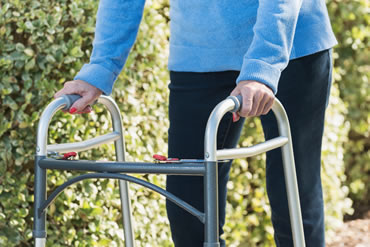 The condition: Mary began having trouble walking in her early 50’s. The difficulty continued to progress, and in time her hips began hurting too. A series of tests and doctors determined that she had a neuromuscular disease that was also complicated by severely arthritic hips. She felt she was too young for hip replacement surgery, but after she became wheelchair bound and was unable to care for herself or her family, she decided to reconsider.
The condition: Mary began having trouble walking in her early 50’s. The difficulty continued to progress, and in time her hips began hurting too. A series of tests and doctors determined that she had a neuromuscular disease that was also complicated by severely arthritic hips. She felt she was too young for hip replacement surgery, but after she became wheelchair bound and was unable to care for herself or her family, she decided to reconsider.
 The condition: Just as Dennis Darria was getting used to retirement, he had an accident: While helping his wife bring in the groceries one winter afternoon, he slipped on ice and, like so many people, used his hands to brace his fall. His right ring finger got jammed in a mound of frozen snow. When the pain, distortion, and lack of movement didn’t subside after a few days, he went to see a general orthopedist. The doctor attempted to spread the finger’s proximal interphalangeal (PIP) joint by surgically implanting a screw, but found that the bone was shattered. He instead placed a pin in the bone. After a couple of weeks, it was clear to Dennis that something wasn’t right. Dennis was then told his finger joint would need to be fused, with the choice of remaining permanently either totally straight or bent at a 45° angle. Not wanting to give up movement in his finger, Dennis turned to his long-time trusted internist who strongly recommended that he consult Dr. Lunt.
The condition: Just as Dennis Darria was getting used to retirement, he had an accident: While helping his wife bring in the groceries one winter afternoon, he slipped on ice and, like so many people, used his hands to brace his fall. His right ring finger got jammed in a mound of frozen snow. When the pain, distortion, and lack of movement didn’t subside after a few days, he went to see a general orthopedist. The doctor attempted to spread the finger’s proximal interphalangeal (PIP) joint by surgically implanting a screw, but found that the bone was shattered. He instead placed a pin in the bone. After a couple of weeks, it was clear to Dennis that something wasn’t right. Dennis was then told his finger joint would need to be fused, with the choice of remaining permanently either totally straight or bent at a 45° angle. Not wanting to give up movement in his finger, Dennis turned to his long-time trusted internist who strongly recommended that he consult Dr. Lunt.
Disclaimer: Any prior results discussed in this site do not guarantee a similar outcome.




